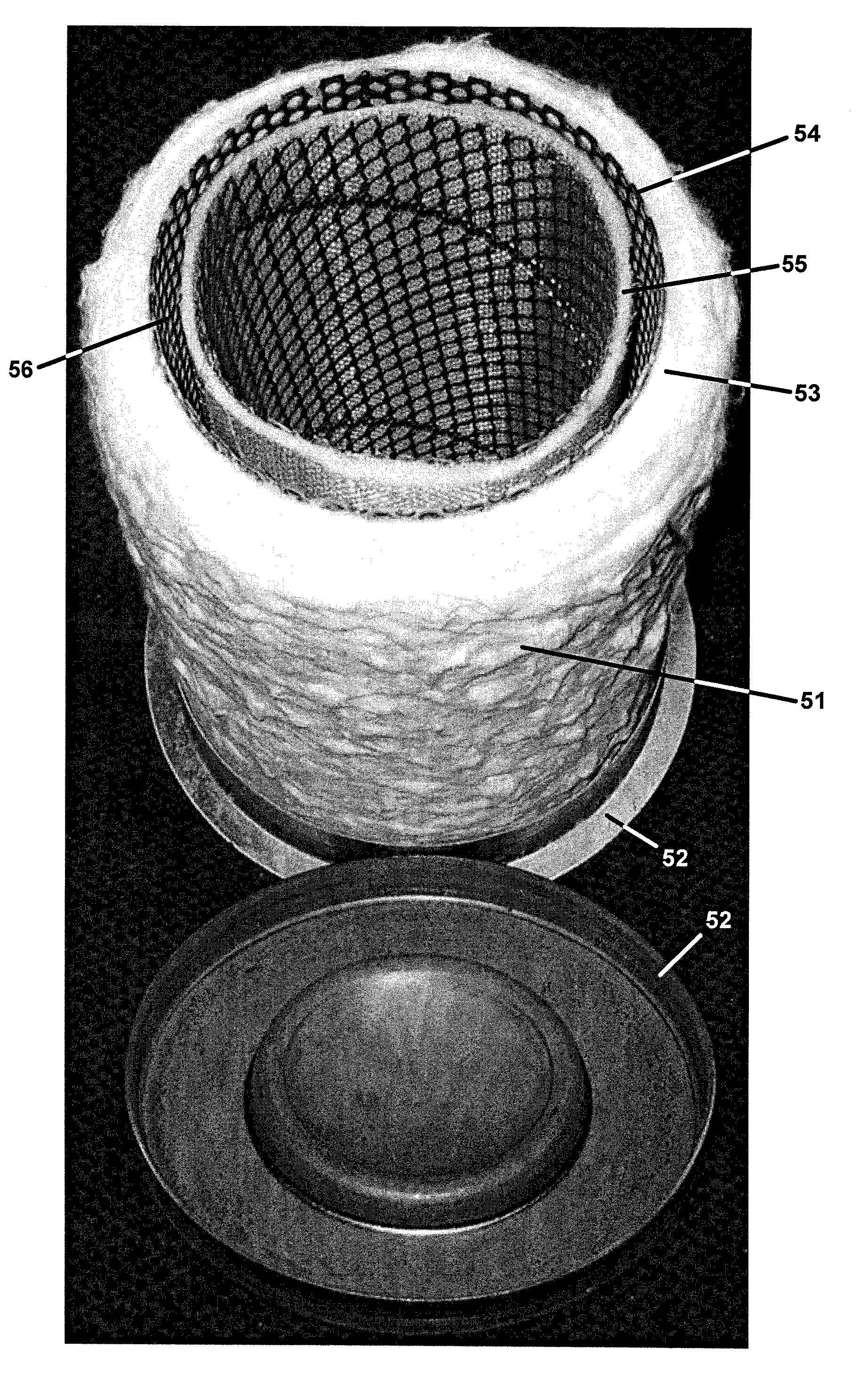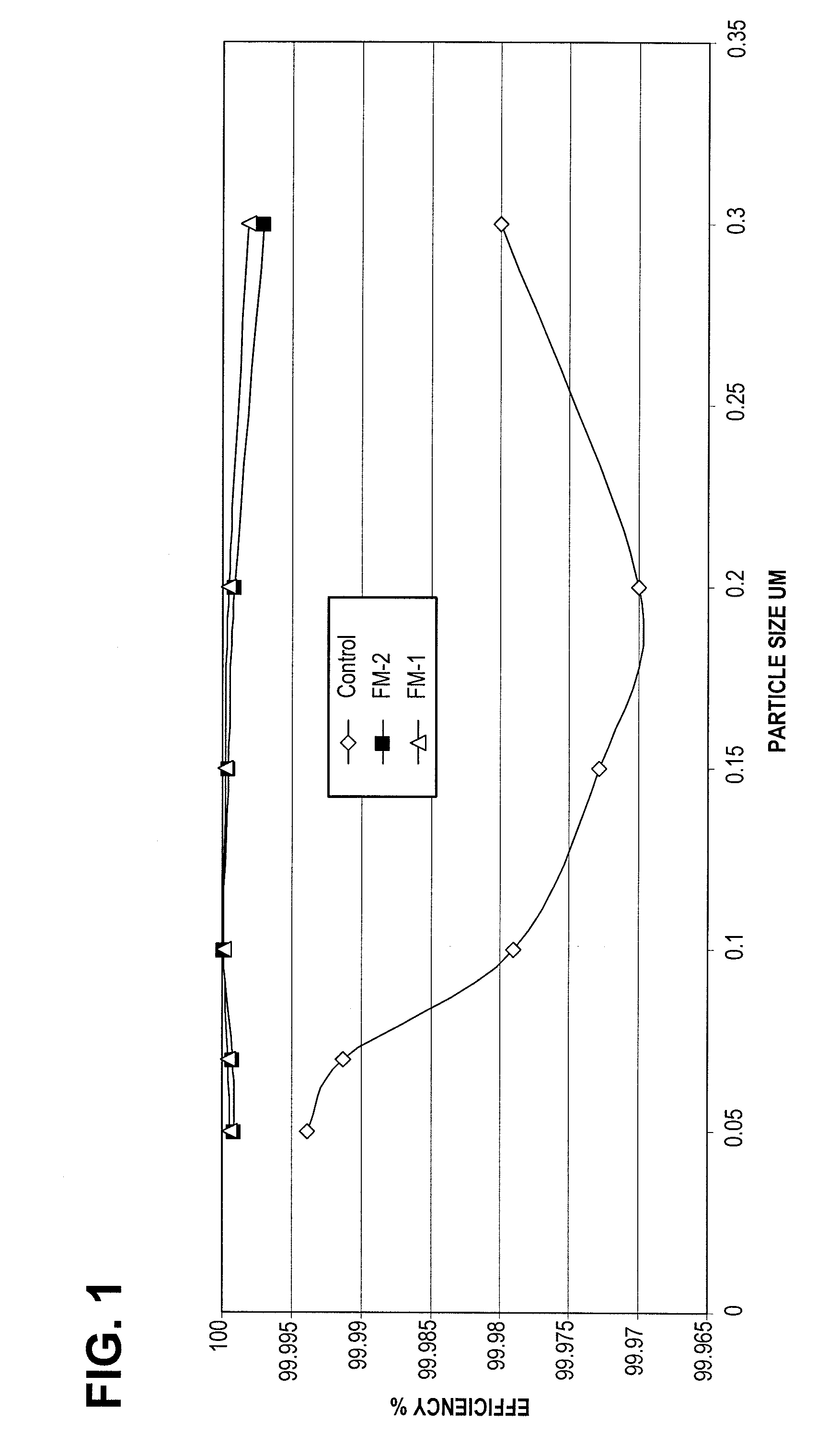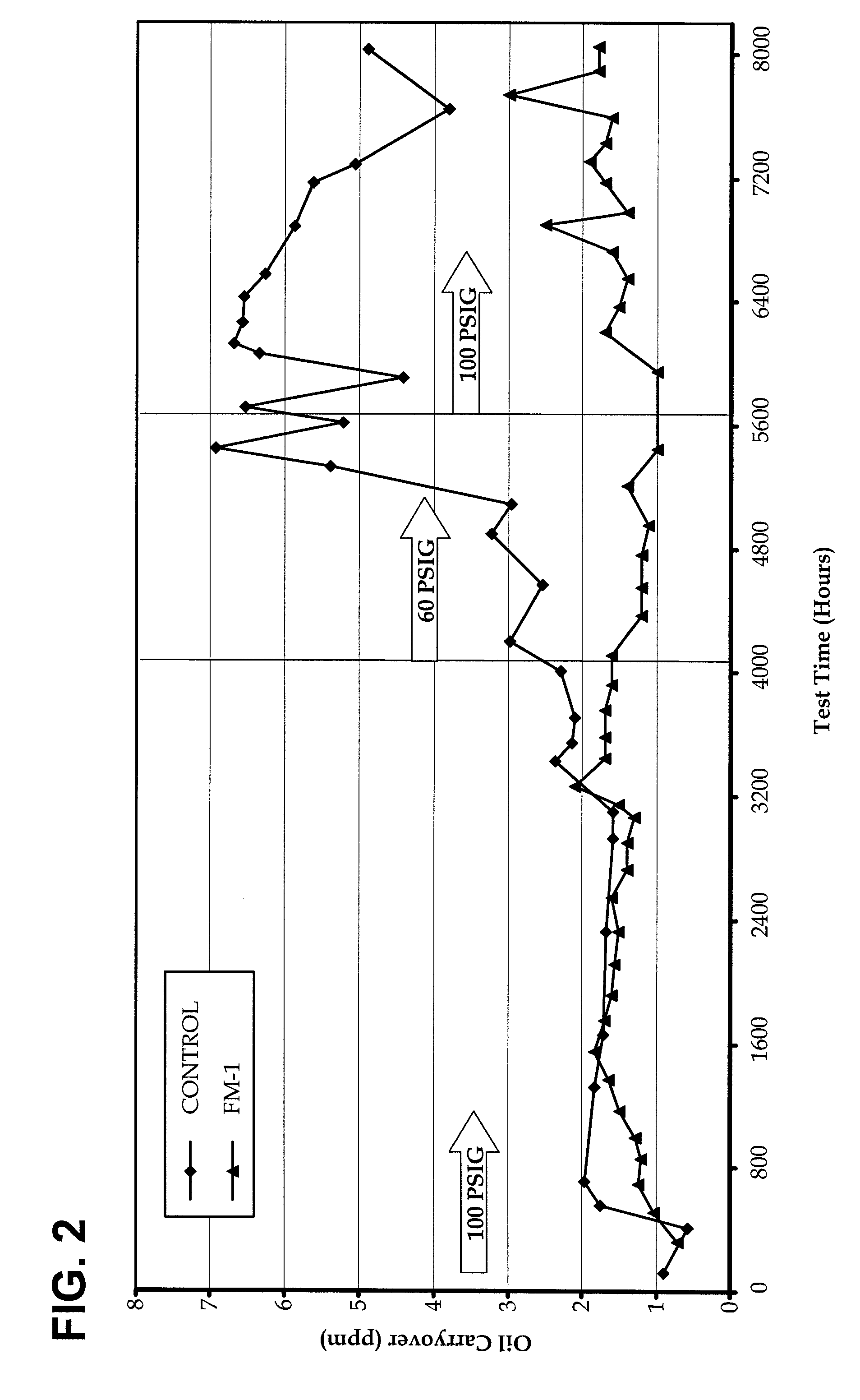Formed filter element
a filter element and forming technology, applied in the field of filter elements, can solve the problems of limited ability to achieve certain filtration attributes such as pore size, basis weight, thickness, permeability and efficiency, and conventional technologies are not suitably flexible to effectively accommodate the range of particle sizes. , to achieve the effect of excellent characteristics and low pressure drop
- Summary
- Abstract
- Description
- Claims
- Application Information
AI Technical Summary
Benefits of technology
Problems solved by technology
Method used
Image
Examples
example 1
[0079]A filter medium of the invention, FM-1, was made using the following technique. Into 250 gallons of untreated tap water was mixed Advansa 271P bicomponent fiber (obtained from EXSA Americas, New York, N.Y.), Evanite #610 glass fiber, and Evanite #608 glass fiber (both obtained from the Evanite Fiber Corporation of Corvallis, Oreg.) such that the relative weight of the components are as shown in Table 1. Mixing was carried out with a 2HP rotating paddle mixer for between 30 and 45 minutes to obtain an aqueous slurry of fibers. The slurry was then vacuum formed onto a 5.25″×9″ perforated metal cylinder by completely immersing the cylinder in the slurry and holding it under a vacuum of approximately 20 inches Hg for 3-10 seconds.
[0080]The formed media was then retracted from the slurry and vacuum was maintained for 15-30 s. The media was removed from the vacuum fixture and placed in a vented oven. The oven temperature was set to 300° C. Residence time in the oven was approximatel...
example 2
[0082]A filter medium of the present invention, hereafter referred to as FM-2, was made using the filter making process of Example 1. The components of the filter slurry are shown in Table 2.
TABLE 2Components of FM-2FibersWt. (g)DuPont 271 fiber (14μ)980Evanite ® glass fiber #610 (2.8μ)200Evanite ® glass fiber #608 (0.8μ)420
After the oven drying step, FM-2 was 0.84 cm thick. FM-2 was found to have a basis weight of 1187 g / M2. The initial air permeability of FM-2 was determined to be 1.4 feet / minute (fpm).
example 3
[0083]A filter medium of the present invention, hereafter referred to as FM-3, was made using the filter making process of Example 1. The components of the filter were bicomponent fibers and carbon particles, added to the slurry at a ratio of approximately 1:1 by weight. The bicomponent fibers were DuPont-271 fibers. The carbon particles were Calgon MD5695, 50-200 mesh activated carbon particles from a coconut powder source, obtained from the Calgon Carbon Company of Pittsburgh, Pa. The particles were mixed directly into the slurry with no prior treatment or washing. After the oven drying step, the filter was analyzed for weight percent of the components. The components of the filter are shown in Table 3. Micrographs of the inside and side views of FM-3 are shown in FIGS. 7e and 7f.
TABLE 3Components of FM-3ComponentWt. %DuPont-271 (14μ)49.95MD5695, 50-200 mesh carbon particles50.05
[0084]The available surface area of the MD5695 particles and the FM-3 filter media containing 50% MD569...
PUM
| Property | Measurement | Unit |
|---|---|---|
| Temperature | aaaaa | aaaaa |
| Length | aaaaa | aaaaa |
| Length | aaaaa | aaaaa |
Abstract
Description
Claims
Application Information
 Login to View More
Login to View More - R&D
- Intellectual Property
- Life Sciences
- Materials
- Tech Scout
- Unparalleled Data Quality
- Higher Quality Content
- 60% Fewer Hallucinations
Browse by: Latest US Patents, China's latest patents, Technical Efficacy Thesaurus, Application Domain, Technology Topic, Popular Technical Reports.
© 2025 PatSnap. All rights reserved.Legal|Privacy policy|Modern Slavery Act Transparency Statement|Sitemap|About US| Contact US: help@patsnap.com



